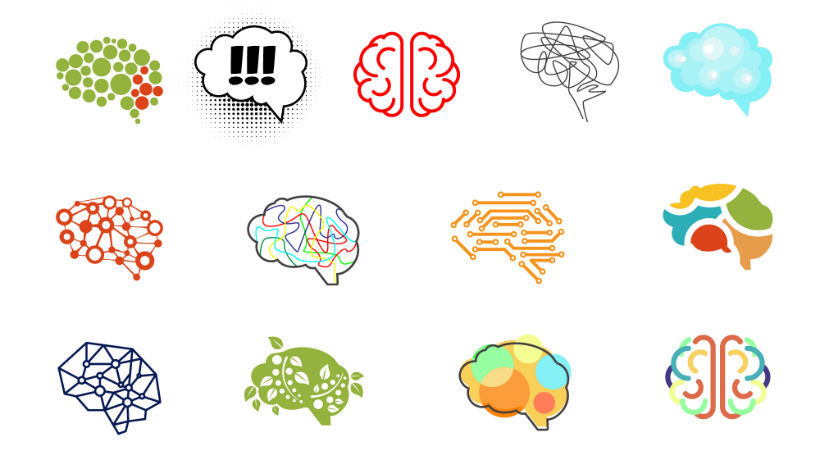The Aptitude-Treatment Interaction Theory In eLearning: Principles And Conditions
Aptitude-Treatment Interaction or ATI was first introduced by Cronbach and Snow [1]. Applied in eLearning, this theory suggests that a learner’s skills and abilities play a crucial role when choosing the ideal instructional approach. These approaches or strategies are referred as "treatments". eLearning may be truly effective when the method of instruction aligns with the online learner’s aptitudes and talents. Instructional Designers can use the Aptitude-Treatment Interaction theory to create personalized eLearning courses based on the unique abilities of each online learner.
Applying 3 Core Principles Of The Aptitude-Treatment Interaction Theory In eLearning
Here are the 3 main principles of the Aptitude-Treatment Interaction theory that you should consider for your learner-centered eLearning course design:
Principle 1
Aptitudes and treatments are greatly influenced by certain variables, such as the nature of the task and the situation. The interaction between the aptitude and the instructional design strategy also involves complex patterns.
Principle 2
The structure of the online learning environment plays a vital role. Environments that are highly structured are ideal for online learners who have lower abilities. Less structured eLearning environments are more effective for online learners with higher abilities. For example, in terms of Instructional Design for eLearning, this may have a direct impact on the degree of freedom we allow regarding eLearning navigation options.
Principle 3
Online learners who are more anxious or wish to conform fare better in more structured eLearning environments. On the other hand, more independent and less anxious online learners may prefer eLearning environments that are less structured.
Conditions For Applying The Aptitude-Treatment Interaction Theory In eLearning
According to the Aptitude-Treatment Interaction theory, online learners will acquire and assimilate new knowledge based on their level of aptitude. Thus, the method of online instruction must align with their skills, talents, and abilities in order to be truly effective. Snow [2] suggests that the primary goal of Aptitude-Treatment Interaction is to determine which combinations of aptitude and treatments will achieve the desired outcomes. He also states that there are three main conditions that Instructional Designers should bear in mind, which applied to eLearning course design can lead to the following conclusions:
Condition 1
Aptitude-Treatment Interactions are common in educational settings, including eLearning. In fact, the aptitude of the online learner has a direct impact on every eLearning activity that you develop. For example, an eLearning scenario may be ideally suited for one online learner, but miss the target for another. This all boils down to their abilities and skills.
Condition 2
There are many Aptitude-Treatment Interactions that are difficult to measure or demonstrate. This is due to the fact that these interactions are highly complex and involved, as learning preferences vary considerably from person to person, even for the same person at different times. Therefore, as there is no specific Aptitude-Treatment Interaction approach that can offer a "one-size-fits-all" solution, a personalized eLearning approach, when possible, leading to personal learning paths may prove beneficial.
Condition 3
One of the vague areas of Aptitude-Treatment Interaction research is the idea of learning behaviors and social learning components.
Connecting Gardner's Multiple Intelligences Theory And Aptitude-Treatment Interaction
Gardner's theory of Multiple Intelligences is a research area of Aptitude-Treatment Interaction that expands on the theory. According to Gardner, learners can usually be classified using 8 different intelligence types, instead of focusing on one type, as is the case for Aptitude-Treatment Interaction. eLearning professionals can use these 8 intelligence categories to create eLearning content that aligns with online learner traits and needs:
1. Logical
These online learners learn more effectively by categorizing the subject matter and classifying the key concepts and ideas.
2. Linguistic
Learn most effectively when eLearning content is language-centric, such as listening to a lecture or watching a narrated online presentation.
3. Musical
This group of online learners acquires more information when it appears as lyrics and rhythms. For example, songs that feature the key takeaways in the form of verse.
4. Kinesthetic
Kinesthetic learners assimilate information more effectively while they are moving or directly engaging with the eLearning content. Tactile eLearning activities, such as drag and drop or matching eLearning exercises, are perfect examples of kinesthetic eLearning interactivity.
5. Spatial
Involves visualizing the concepts using pictures, graphs, and charts. These online learners map out the ideas in their minds in a more visual way, even if the information is in text form.
6. Naturalistic
These online learners need to clearly identify the key takeaways, experiment with the information, or interact with nature. They prefer to put their knowledge into practice in a more pragmatic way.
7. Intrapersonal
Asynchronous learners who prefer to work on their own, independently of their peers. They enjoy exploring the topic alone and participating in eLearning activities that are more isolated, such as serious games that do not feature leaderboards. These online learners are not particularly competitive.
8. Interpersonal
Social learners who prefer to work in groups in order to share their insights, offer eLearning feedback, and compare eLearning experiences. Social media is a powerful tool for this online learner group, as it allows them to interact with their peers and work collaboratively to achieve a common goal.
The Importance Of Aptitude-Treatment Interaction In eLearning
The Aptitude-Treatment Interaction theory gives eLearning professionals the power to create eLearning content that aligns with the traits and abilities of their audience. Instead of simply designing a generalized eLearning course, it gives you the opportunity to determine who can benefit from which eLearning activities, as well as how you can achieve the desired outcome by choosing the right treatments. As a result, you can narrow down the list of potential eLearning activities in order to apply the best approach.
Applying Aptitude-Treatment Interaction in your eLearning design allows you to target the specific needs and aptitudes of your audience. Essentially, it serves as a road map for developing learner-centered eLearning courses that are structured around their abilities and experience level.
Would you like to learn about other psychological principles that apply in eLearning? Read the article Designing eLearning For Adult Learners: 5 Psychology Principles To Apply to discover 5 tips that can help you create memorable and engaging eLearning courses for your adult learners by using the power of psychology.
References
- Cronbach, L. & Snow, R. (1977). Aptitudes and Instructional Methods: A Handbook for Research on Interactions. New York: Irvington.
- Snow, R. (1989). Aptitude-Treatment Interaction as a framework for research on individual differences in learning. In P. Ackerman, R.J. Sternberg, & R. Glaser (ed.), Learning and Individual Differences. New York: W.H. Freeman.





